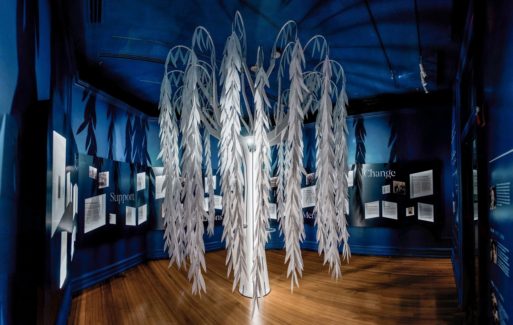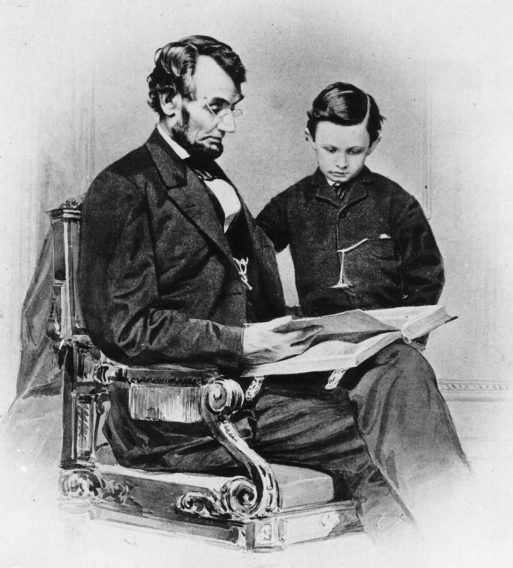
Reflections on Grief and Child Loss at President Lincoln’s Cottage
Credit: lincolnscottage.com
When Abraham Lincoln‘s third son, Willie, died of what was likely typhoid fever at just 11 years old, Abraham and his wife Mary were devastated. They had already lost their second son, Eddie, to illness when he was only 4. This tragic loss would double their burden — one they would now have to bear on the national stage, as President and First Lady of the United States.
To escape the public eye and the stress of the White House during this time, the Lincolns retreated to a cottage at the Old Soldiers’ Home, about three miles from the Capitol. This would come to be known simply as President Lincoln’s Cottage, and today it serves as a museum dedicated to the late president’s life and legacy. This year, it also became the site of a new exhibit exploring the tragedy suffered by the Lincolns, along with countless other families: Reflections on Grief and Child Loss.

Each “leaf” on the memorial willow tree at the Lincoln Cottage exhibit bears the name of a child who died
Credit: Savingplaces.org
The exhibit was developed by President Lincoln Cottage’s director of programming, Callie Hawkins, who herself lost a child in 2018. “After my son died, I got really afraid that people would maybe judge me or think about me in the way that history has remembered Mary Lincoln,” Hawkins told the Washington Post. The late first lady, who lost three sons and a husband in her lifetime, was often criticized for not containing her grief in a more socially acceptable way; some went so far as to question her sanity.
The expectation that grief should look a certain way, last a certain amount of time, or be hidden away from society is still present today. People who experience the loss of their loved ones may be told that they are grieving too much or too long, or that they should just “try to be happy.” This unease around grief is something Hawkins aimed to touch on in the exhibit. “Recently, when talking about the exhibit, someone asked me: ‘Aren’t you afraid it’s going to make people sad?’” Hawkins said in an interview with the National Trust for Historic Preservation. “Well-meaning as it may have been, I think this particular comment demonstrates precisely why we need to be doing this kind of work — to help communities become more comfortable with their discomfort.”

Abraham Lincoln with his youngest son, Tad, who would also die in childhood.
Credit: Britannica
Reflections on Grief and Child Loss incorporates the experiences of modern bereaved families, exploring the timeless commonality of grief. It also features tools for those who want to support their loved ones going through loss. Central to the exhibit is a large, white sculpture of a willow tree, which seems to embody both the innocence of childhood and the quiet, gentle sadness of the Lincolns’ private mourning space.
The museum is currently open to the public with COVID-19 precautions in place, and tickets can be purchased online. The exhibit will remain open at least through 2023.

 Exhibit at President Lincoln’s Cottage Explores Child Loss
Exhibit at President Lincoln’s Cottage Explores Child Loss


 National Donate Life Month Reminds Us To Give
National Donate Life Month Reminds Us To Give
 How Dare You Die Now!
How Dare You Die Now!
 Debating Medical Aid in Dying
Debating Medical Aid in Dying














